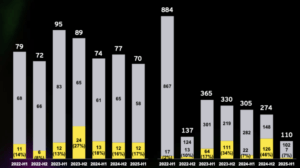E-Scooters: Where To Ride And Where To Park?

The Sofia Municipality is currently working on a framework and regulations on gaining popularity of e-scooters. By the end of July, there should be clear rules defining where users can ride and park e-vehicles. The reason: three of the major European brands are willing to enter the market, and one is expected already in the next two months.
“There are currently two main challenges. The first is related to the number of e-scooters per city. Too many vehicles could cause chaos on the roads and violate the safety of other road users. In the same time, we need a plan to organize the way the e-scooters are parked, and they are not just scattered on the sidewalks,” tells us on the phone municipality counselor Zafir Zarkov, who is actively involved in the process and just came back from Vienna, Europe’s e-scooter hotspot, where his team exchanged some experience.
200+ parking spots in the center
Currently, the Sofia Municipality, together with the Chief Architect, the Center for Urban Mobility and associations like Green Sofia, are actively working on structuring the framework. Already next month, a bit over 200 parking spots should appear in the central areas of the city. Most of them (160-170) will be within the paid parking areas for cars. Additional around 40 will be placed on sidewalks near parks, tells us Zarkov.
Unlike cities like Vienna, where e-scooters could be left on many spots, and the only limitation comes from the mobile application of the user, in Sofia, these spots will be visible for anyone on the road. “At the same time, we are in discussions with the three operators that are interested in launching the service in Sofia and we required that they adjust the parking restrictions within their applications to the zones,” elaborates Zarkov.
25km/h or less, no sidewalks
Currently, the e-scooters are treated as bicycles. This means users cannot ride them on the sidewalks but on the bicycle lanes, which however total only 28 km in Sofia. “We’ve already prepared our proposal to Committee on transport to specify the type of these vehicles and regulate it more specifically. Yet, such a process will take up to six months given the procedures,” shares the counselor.
The maximum speed is another aspect that needs to be clarified. According to Zarkov, the latest discussions ended with the conclusion that 25hm/h should be the upper limit. There were also advocates for lower speed. In Vienna, for instance, in most areas, the limit is 25km/h, and in certain pedestrian-only areas – 5 km/h.
“We are keen on avoiding weaknesses that other cities that were much earlier in this process made. Therefore, we talk to colleagues, mainly in Vienna, and look at good practices, so we are capable to pass on the regulations quickly. It’s a challenge, but we are on it as the large operators are also willing to enter the market as soon as possible,” Zarkov shares. According to him, the operator will be launching the service with 200-300 vehicles each.
Meanwhile in the neighborhood
At the end of June in Romania, where brands like Lime, Flow, and Wolf-e, are already present, a draft law, regulating the use of electric scooters on the public roads, has been submitted to the Chamber of Deputies. In the document, e-scooters are defined as a “two or three-wheeled vehicle whose maximum design speed does not exceed 40 km/h and which is equipped with an electric motor whose maximum continuous nominal power doesn’t exceed 2 kW,” reads a publication of Romania Insider. According to the draft, the e-vehicles can be used on bike lanes, by users above 14. A helmet is a must for everyone under the age of 18 years.
Some bans in Europe
Due to several accidents, there are already some countries in Europe that are starting to ban e-scooters. For instance, in the UK, the Department of Transport has said that e-scooters are not allowed on the road or the pavement. The only place where one can ride e-scooters legally is on private land with the permission of the landowner, reports Euronews. Recently, the Swedish Transport Agency also banned e-scooters from bicycle lanes after a 27-year-old man died in a crash in May. Many cities in Europe, including Vienna, are currently discussing what should be done to ensure safety after the e-scooters have already or are yet to flood the streets.





























